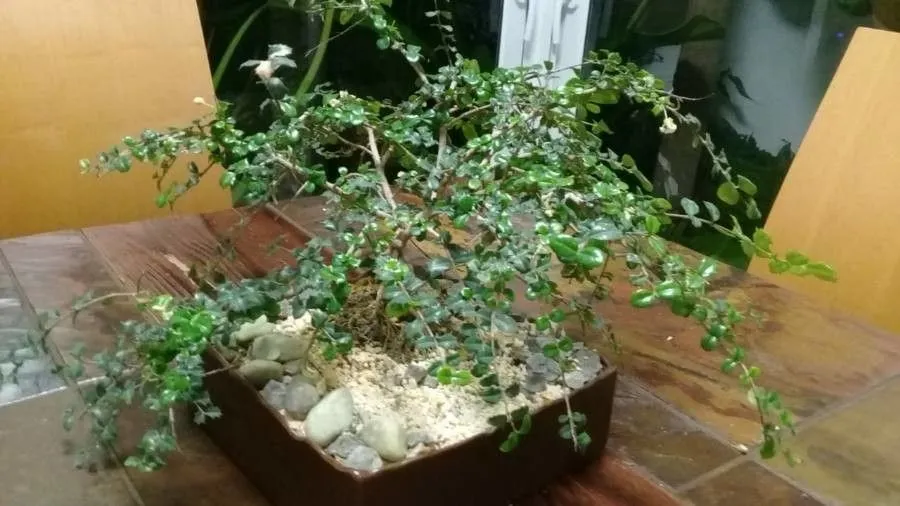
Author: L.
Bibliography: Sp. Pl.: 1192 (1753)
Year: 1753
Status: accepted
Rank: species
Genus: Randia
Vegetable: False
Observations: S. Florida to Caribbean, Mexico to N. South America
Inkberry, scientifically known as Randia aculeata, is a resilient and versatile plant species belonging to the Rubiaceae family. First described by the eminent botanist Carl Linnaeus in his seminal work “Species Plantarum” in 1753, the Inkberry has a rich botanical heritage.
This hardy evergreen is native to a wide geographical area, extending from southern Florida through the Caribbean and Mexico down to northern South America. It adapts readily to diverse climates and soil conditions, which has facilitated its expansion across this broad range.
Inkberry is notable not only for its ecological versatility but also for its distinctive physical characteristics. The plant typically presents a dense, shrubby appearance, with small, dark green leaves that offer a lush presence year-round. The flowers are white, tubular, and aromatic, blooming profusely and attracting a variety of pollinators, thereby playing a crucial role in the local ecosystem.
One of the most striking features of Randia aculeata is its fruit, which is small, dark, and berry-like. These berries, which give the plant its common name, have been historically valued for their usefulness in producing ink, a practice that adds a cultural and historical dimension to the plant’s significance.
In addition to its ornamental and practical uses, the Inkberry serves as an important ecological component in its native habitats. It provides shelter and food for local wildlife, thus contributing to biodiversity and the stability of the ecosystems where it thrives.
In summary, Randia aculeata, or Inkberry, is a plant of significant botanical interest due to its wide distribution, adaptability, aesthetic appeal, and historical utility. Its presence in the various regions stretching from South Florida to northern South America underscores its remarkable adaptability and the essential role it plays in both natural and human-modified landscapes.
Eng: box brier, five-fingers, goat-horn, inkberry, white indigoberry, black cherry, christmas tree, fishing rod, box briar
Spa: palo de cotorra, palo de navidad, sota caballo, tintillo
En: Inkberry, Box brier, Goat-horn, Five-fingers, White indigoberry, White Indigo-Berry, Black Cherry, Christmas Tree, Fishing Rod, Box briar
Zh: 對面花
Es: Palo de cotorra, Palo de navidad, Tintillo, Sota caballo
Zh-tw: 對面花, 山石榴
Taken Aug 8, 2014 by Nelson Zamora Villalobos (cc-by-nc)
Taken Aug 16, 2012 by Nelson Zamora Villalobos (cc-by-nc)
Taken Aug 16, 2012 by Nelson Zamora Villalobos (cc-by-nc)
Taken Aug 16, 2012 by Nelson Zamora Villalobos (cc-by-nc)
Taken Aug 8, 2014 by Nelson Zamora Villalobos (cc-by-nc)
Taken Oct 6, 2022 by Keyla Michel n Villaman (cc-by-sa)
Taken Nov 25, 2020 by Tirado Leonel Tirado (cc-by-sa)
Taken Sep 18, 2019 by Virginia (cc-by-sa)
Taken Aug 17, 2020 by Campos Steven (cc-by-sa)
Taken May 16, 2020 by Günter Granitzer (cc-by-sa)
Taken May 14, 2019 by Marzanna Bug (cc-by-sa)
Taken Mar 28, 2015 by EOL − Jennifer Rycenga (cc-by-nc)
Taken Jan 5, 2013 by EOL − Homer Edward Price (cc-by)
Taken Jan 1, 1900 by EOL − Carrington, S. (cc-by-nc-sa)
Taken Jan 1, 1900 by EOL − Smithsonian Institution, National Museum of Natural History, Department of Botany (cc-by-nc-sa)
Taken Apr 14, 2020 by Obed De La Cruz Perez (cc-by-sa)
Taken Jan 8, 2022 by Topon Erik (cc-by-sa)
Taken May 2, 2020 by Green Pumpkin (cc-by-sa)
Taken Jan 1, 1900 by EOL − Acevedo, P. (cc-by-nc-sa)
Taken May 30, 2014 by EOL − Bob Peterson (cc-by-sa)
Taken Mar 11, 2017 by Martine Martine Souriau (cc-by-sa)
© copyright of the Board of Trustees of the Royal Botanic Gardens, Kew.
© copyright of the Board of Trustees of the Royal Botanic Gardens, Kew.
© copyright of the Board of Trustees of the Royal Botanic Gardens, Kew.
Growth habit>: Tree, Shrub
Family: Myrtaceae Author: (F.Muell.) K.D.Hill & L.A.S.Johnson Bibliography: Telopea 6: 402 (1995) Year: 1995 Status:…
Family: Rubiaceae Author: Pierre ex A.Froehner Bibliography: Notizbl. Bot. Gart. Berlin-Dahlem 1: 237 (1897) Year:…
Family: Sapindaceae Author: Koidz. Bibliography: J. Coll. Sci. Imp. Univ. Tokyo 32(1): 38 (1911) Year:…
Family: Asteraceae Author: A.Gray Bibliography: Pacif. Railr. Rep.: 107 (1857) Year: 1857 Status: accepted Rank:…
Family: Fabaceae Author: Medik. Bibliography: Vorles. Churpfälz. Phys.-Ökon. Ges. 2: 398 (1787) Year: 1787 Status:…
Family: Aspleniaceae Author: (Cav.) Alston Bibliography: Bull. Misc. Inform. Kew 1932: 309 (1932) Year: 1932…